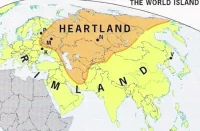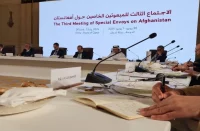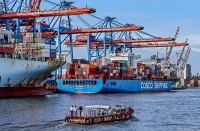Alexander Dobrovolsky (Russia)
Contradictory reports coming in from Afghanistan almost daily about peace talks between members of the Kabul government and representatives of the Taliban not only persuade us that talks are taking place but that they have gone beyond the initial stage of establishing contacts. And that the process is evolving rapidly despite the Taliban’s unwillingness to negotiate anything with representatives of “Karzai’s corrupt puppet clique,” as they contemptuously call it.
The first meetings between Hamid Karzai’s people and the Taliban took place in January and May of this year in the Maldives. They were unofficial and secret, and the Taliban leaders stressed that they would have no contact with NATO occupation forces before their withdrawal from the country. The initial contacts took place in the Maldives because it is one of the few countries that issue Afghans visas upon arrival in the airport without requiring advanced visa applications. Almost 50 people took place in the May talks. They were organized by Hekmatyar Jarir, son-in-law of Gulbuddin Hekmatyar, an infamous warlord and the leader of the Hezb-e-Islam party.
President Karzai was forced to agree to the talks with the opposition only this year when it became clear to him that, since he could not vanquish the Taliban in concert with NATO, he would be even worse off without it. The Western countries were not even invited to the meetings in the Maldives as observers.
According to the international media, there have even been several rounds of talks in Kabul and its environs over the last few months. Karzai’s representatives met with members of the Taliban Council (Shura) from the Pakistani city of Quetta. That Shura has actively participated in the war in Afghanistan. They also met with leaders of the so-called “Haqqani network,” which is considered the most powerful insurgent group in the country, and with Shura members from Peshawar in eastern Afghanistan, where the Taliban influence is strong. At the same time, it is clear that not all insurgent movements are in agreement about talking to the Kabul government, which means that for now the opposition is “underrepresented.” Not to mention that Pakistan has not yet weighed in, and Pakistan has a major say in the continuation of the Afghan war even though it is considered a US ally in the region.
Both sides in the talks are trying to gain a “position of strength.” To achieve that, NATO’s ISAF has sharply stepped up air attacks on Taliban groups in both Afghanistan and Pakistan. According to NATO, over the last three months combat aircraft and UAVs have dropped and launched more than 1600 bombs and missiles at targets in Afghanistan, almost half of them (700) in September. Only 1031 bombs were dropped during the same three-month period last year—257 in September.
American military strategists believe that these tactics will create problems for the Taliban, disrupt their command and control and sow discord between fighters in the field and their leaders in Pakistan. In addition, NATO confirms that NATO special operations forces are also in the country with a mission that includes killing militants. They are doing that, but they are also sustaining losses, about which we hear very little.
The Taliban for its part is not sitting idly by either. Despite the 15-fold (!) superiority of NATO and government forces (370 thousand troops vice 22—30 thousand militants) they not only manage to attack Western patrols with mines and burn convoys, they even capture American bases. In mid-October, they took control of the American base located in the Marawara District of Kunar Province in northeast Afghanistan near the border with Pakistan. Taliban warlord Qari Ziyarah Rahman said that American soldiers hastily abandoned the base and flew away in helicopters, leaving behind a large quantity of weapons and military equipment.
The United States considers it to be a key base in the eastern part of the country because it monitors the transborder Bajaur region inhabited by Afghan tribes in neighboring Pakistan. There were approximately 500 American soldiers and combat aircraft at the base, but they were unable to resist the Taliban attackers. In April, the Taliban captured a different American base in the Korengal Valley. The major Arab television networks showed still images of bearded militants walking around the American military base.
True, the US military headquarters later said that the Taliban did not capture the base, that the United States had simply abandoned it because it supposedly was not of significant strategic value and only took forces away from important areas. In other words, the United States was “adjusting the front line,” as Goebbels’ propaganda termed similar retreats During World War II. The military command did not comment on the latest US base capture because it does not like admitting losses and military failures
Despite all of these tricks, however, losses by the NATO coalition in Afghanistan are constantly increasing, and the number of burned trucks carrying military equipment, fuel and ammunition jumps after each attack by American UAVs on Taliban in the field. Especially vulnerable are the supply routes from Pakistan, over which up to 80% of military cargoes are transported—hundreds of 20—30 tonne trucks have been burned there in recent months.
Things reached the point that in mid-October NATO asked Russia for permission to transport military equipment in addition to non-military goods across its territory. NATO leaders officially made that proposal to Moscow after militants burned more than 30 NATO POL trucks near Quetta. According to the media, however, Russia replied that it would only allow shipments of nonmilitary items—food, medicine, tents, etc.—and that it could not allow NATO to ship military goods to Afghanistan through Russia.
The loss of capabilities for normal resupply of troops, along with the increased activity by militants across virtually all of Afghanistan and their establishment of control over several southern regions and northeast provinces, have forced NATO to look for means of reconciliation with the Taliban. Therefore, during the recent series of meetings NATO gave Taliban representatives in Afghanistan safe conduct and transported them within the country on Western aircraft and in NATO armored cars with armed guards.
In addition, NATO resorted to the services of the ANSO analytical group, which advises international nongovernment organizations on security in Afghanistan. After assessing the situation, ANSO recommended that NATO consider enlisting the cooperation of the Taliban instead of avoiding them. Contrary to statements by NATO generals who would rather talk about the possibility of a military victory over the ridiculously small numbers of the enemy, the analysts argued that beyond a doubt the Taliban will increasingly play a political role in Afghanistan.
So it is becoming obvious to serious military experts that the arrogant, armed-to-the-teeth Western alliance that started the war in Afghanistan in 2001 is losing and is being forced by the situation to negotiate. But The New York Times writes that so long as the insurgents feel they are winning, they do not especially want to negotiate, and they show little desire to end the war. It quotes CIA Director Leon Panetta as saying there is no sign of serious attempts at peace by the Taliban.
Today, the Western alliance’s situation in Afghanistan is even worse than that of Soviet forces 20 years ago. The Soviet force in Afghanistan at that time numbered from 80 to 100 thousand soldiers. Together with the Afghan Army, it had 200 thousand people to oppose approximately 140 thousand mujahedeen that were almost openly supported by the United States with weapons and ammunition.
Now, a NATO force of almost double the strength at 150 thousand soldiers and 230 thousand government soldiers and police are suffering a shameful defeat at the hands of the Taliban, whose numbers are estimated at 22—30 thousand and which receive almost no external support, especially weapons. It is a pure paradox, and it is unfolding before the eyes of the entire world.
The Americans, naturally, are trying to put up a bold front. To do that, American commanders try to appease the Taliban and reduce their losses by paying the enemy tens of millions of dollars each month through intermediaries—just so the bearded insurgents in their dusty coats do not attack their troop convoys. It is possible that the Taliban’s unique racket will make its way into textbooks on military history and tactics.
All of this is taking place amidst a gradual drop in the military enthusiasm of the members of the NATO coalition in Afghanistan, which numbered as many as 47 in the midst of the war. The Dutch have already withdrawn their troops; and the British, who are tired of spending billions of pounds to maintain troops thousands of kilometers from home, are getting ready to do so. Out of all of the countries in the International Security Assistance Force (ISAF), today only Australia, which has 1500 soldiers in the Afghan mountains, favors pursuing the war till the bitter end.
The United States has already announced that it will begin gradually withdrawing its forces from Afghanistan in July 2011. That date has caused the militants to step up their activities, feeling that the Karzai government will soon be left without foreign military support. They have increased mining of transportation routes, attacks in cities by suicide bombers wearing “Shaheed belts” and attacks on NATO garrisons. As of October 18, 2010, more than 2155 international coalition soldiers have been killed in Afghanistan. The greatest losses were sustained by the United States (1333), Great Britain (340) and Canada (152).
Source: New Eastern Outlook














Comments